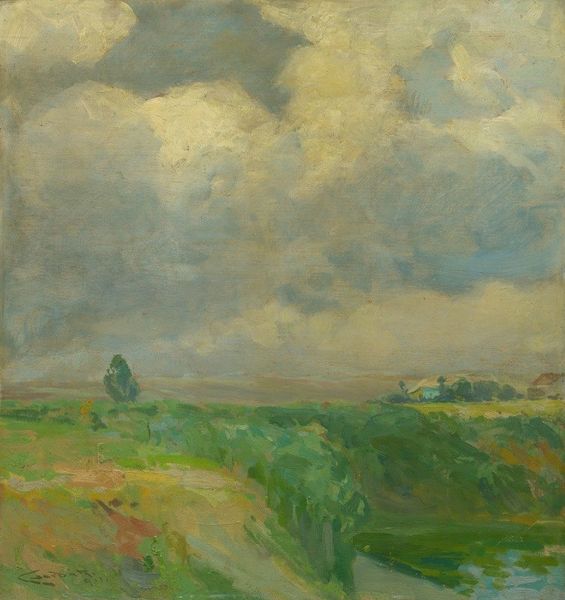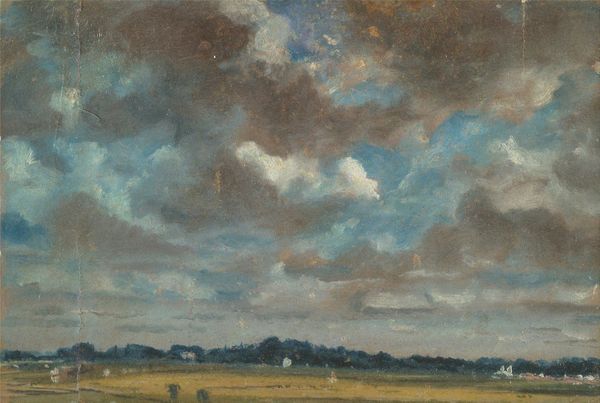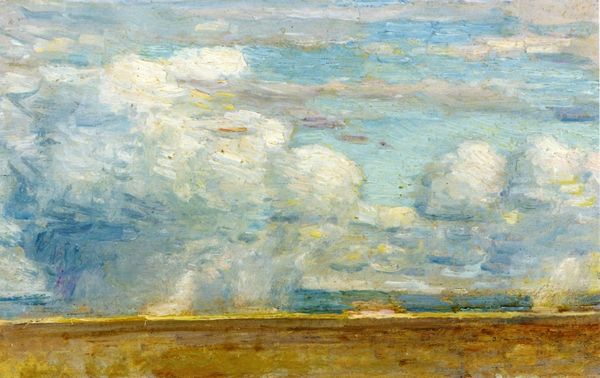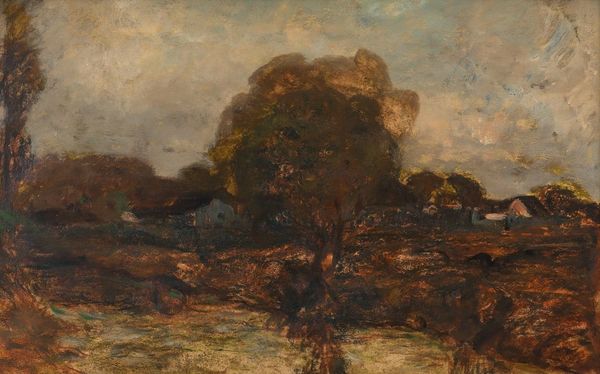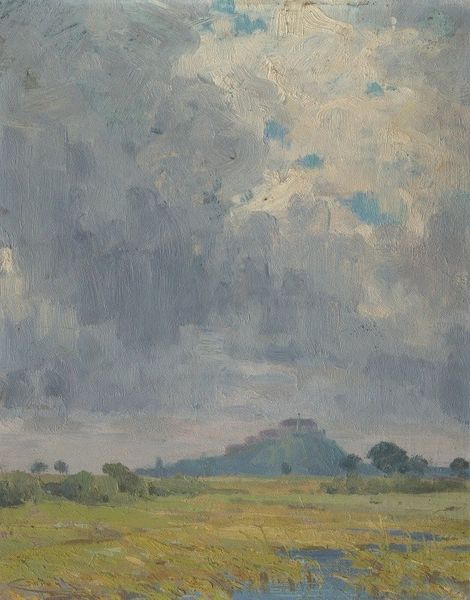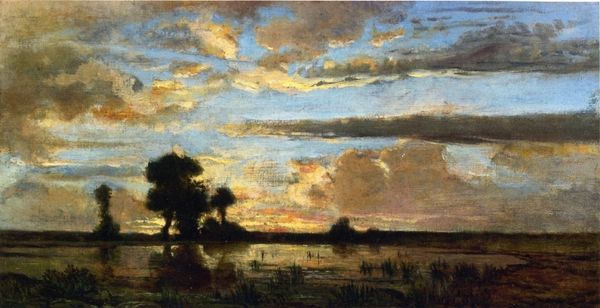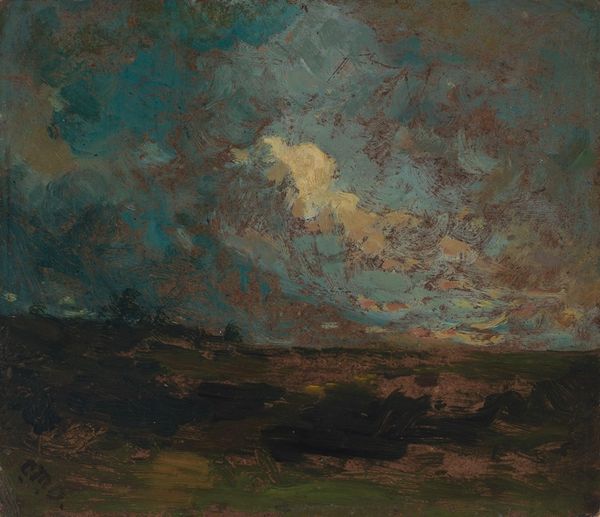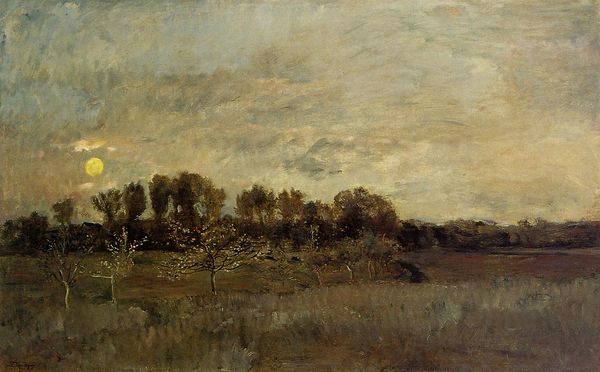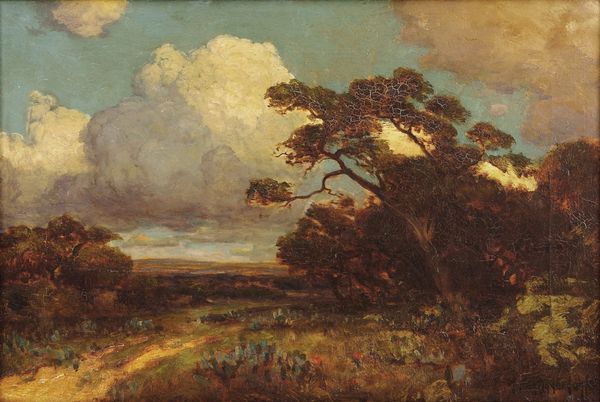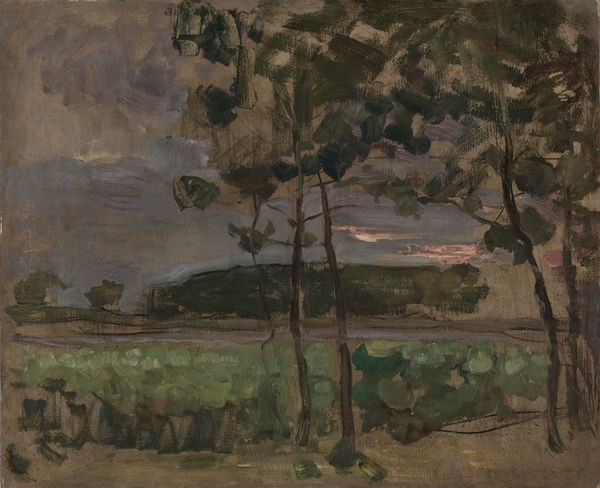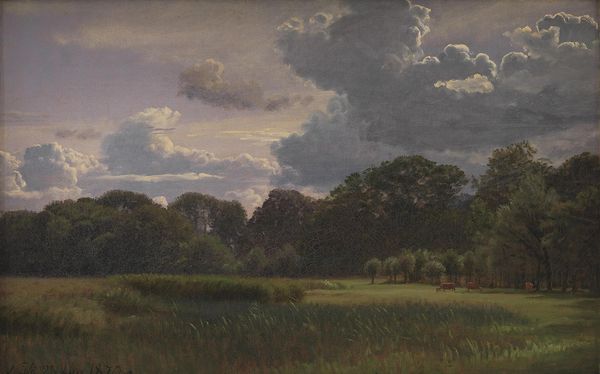
Copyright: Public Domain: Artvee
Editor: We’re looking at ‘Meadow with Bushy Trees’ by Ľudovít Čordák, likely painted between 1910 and 1915, in watercolor. I find it incredibly peaceful. It almost feels like a dreamscape. What do you see in this piece? Curator: What I find particularly fascinating is its engagement with the Plein-air tradition. Čordák isn’t just capturing a scene; he’s capturing a moment, an atmosphere. Consider the sociopolitical landscape of the time. Landscape painting, often perceived as apolitical, was actually a space where artists could subtly express national identity and connection to the land. How might this quiet scene, created in a period of shifting national boundaries, speak to notions of belonging? Editor: That's a compelling point. I hadn't considered landscape as a form of national expression. So, you’re saying this serene meadow might be Čordák's way of quietly asserting a connection to his homeland? Curator: Precisely. And think about the watercolor medium itself. It's often associated with immediacy and personal expression, differing from the grand oil paintings of the established academy. How does choosing such a medium change the reception or perceived importance of a landscape scene like this one? Editor: That's fascinating! It reframes my understanding entirely. I initially saw it as purely aesthetic, but now I recognize its potential to reflect the artist’s socio-political context. Curator: Exactly! Art, even seemingly tranquil landscapes, rarely exists in a vacuum. Investigating the world surrounding it makes art viewing that much richer. Editor: I'll definitely remember to look at the wider historical context when analyzing artwork. Thanks for your perspective! Curator: Likewise, it is enriching to reconsider the cultural dynamics with fresh eyes.
Comments
No comments
Be the first to comment and join the conversation on the ultimate creative platform.

